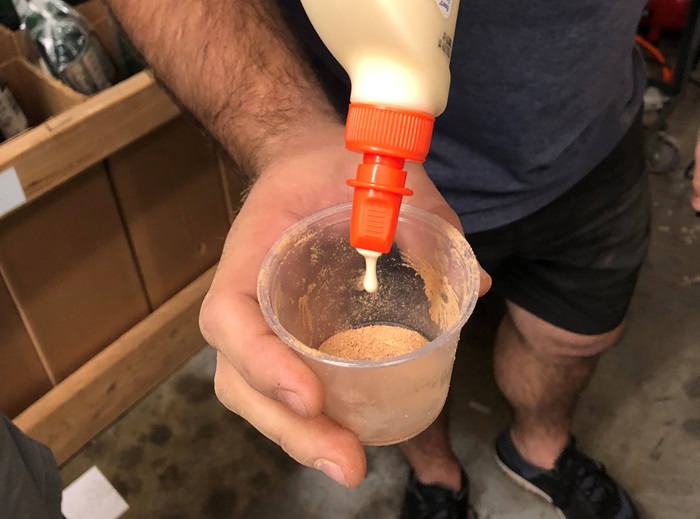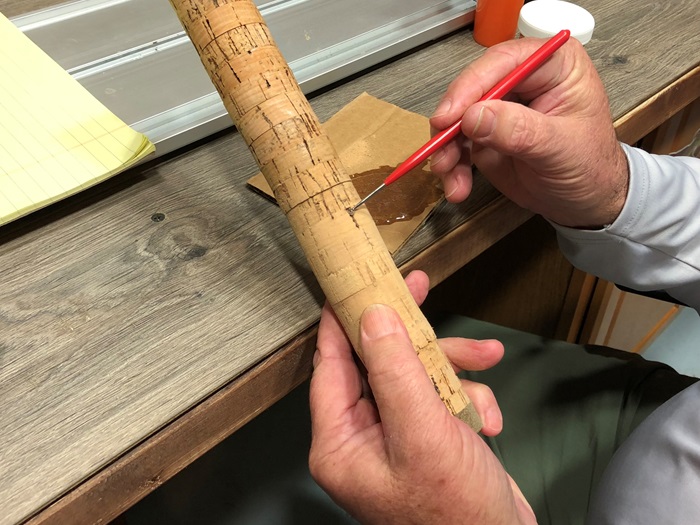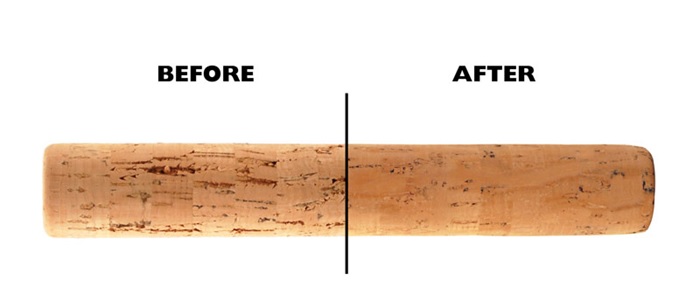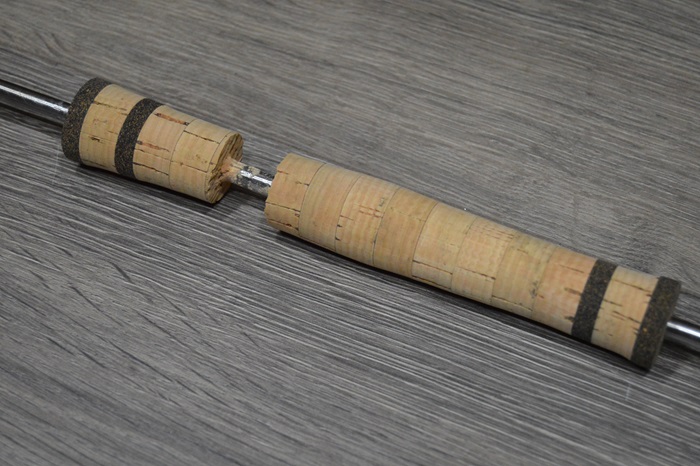Sometimes even the most beautiful cork fishing grips can have problematic voids, but the good news is… it’s an easy fix and this blog will help you do it.
5 Easy Steps to Fix Custom Cork Handles
Custom cork grips are popular for both look and feel, not to mention it can be shaped to get the perfect fit in your palm.
One characteristic of cork that makes it popular yet can also cause its replacement, is the semi-porous nature of its construction. This porous construction gives cork its incredible lightweight feel, but that also means it can lead to voids and cracks after years of repeated use.
Sometimes, fresh cork grips still come with poorly placed voids before its even made it to the water. These voids as well as those caused from wear and tear should be addressed the rod building way.
Whether it’s a puncture from your finger placement, an enlarged gap from repeated use, or a void that’s deeper than expected, all of these cork issues can be solved with the steps below!
1. Identify the Voids to Fill
To start, take a good look at your cork grip and spot any blemishes you want to fix.
You can also feel the cork in your palm and roll it around to see if they are any additional voids that could hinder your fishing grip.
After identifying the voids you want to fix, we can move on and begin the filling process.
2. Sand Cork Fishing Grip
Depending on the number of voids and the size of each void, you will need to make a filler that looks like the cork itself. In order to get the most realistic filler, sand the cork down just a tad to get the spare cork dust from the grip you want to fix.

Lightly sand the cork until you have enough cork dust material to put back into the cork’s voids.
TIP: If you are starting a new build, use the cork dust from reaming the cork grip to fit over the rod blank.
3. Mix Epoxy and Add Cork Dust
Next, you will have to use some sort of glue or adhesive to ensure the void is filled for good.
At Mud Hole, we offer multiple products designed to work with cork grips and fix any blemishes in its structure:
Based on your preference, each of these adhesives will work great to fill in the void. With your glue selected, follow the instructions to activate the substance’s adhesive properties.

For instance with ProGlü, it is a two-part epoxy glue that you will have to mix at a 50/50 ratio. On the other hand, wood filler, pit paste, and wood glue can be used straight from the container.

Once your glue is prepped, mix in some of the cork dust from your grip. This cork dust will help fill the voids with a similar color tone as the cork itself.

4. Pack Mixture into the Cork’s Void
Using a thread pick or something similar, scoop up small globs of the glue mixture and pack it into the void.

Pack the glue down by lightly pressing the glue down into the cork. This will help fill all of the cork’s porous channels that run within the material and slowly soak up more glue.

Keep adding and packing glue until you have a small hump emerging from the void.
TIP: If you choose wood glue, use a brush to spread the glue over and into the voids of the cork.

5. Sand the New Cork Surface Even
Let the glue mixture cure so that the void is filled and the surface is hard.
Suggested Curing Times:
- ProGlü—needs 40 minutes to cure
- Wood Filler—shallow repairs take15 minutes, but deeper repairs require 2-8 hours to cure
- Wood Glue—for the best bond and curing results, leave to dry overnight
After the filling has hardened and cured, use some sand paper and lightly sand down the glue hump until it is even with the surface of the cork.
In the photo below, the left side shows the original condition of the cork and the right side shows the same cork with the voids filled.

It’s as easy as that… now you have a cork grip that is fixed up and ready to work on the water!

More Ways to Make Your Cork Grips Last
From filling the voids and fixing the cracks in cork fishing grips to enhancing the actual exterior, rod building has developed some excellent methods to preserve the performance and popularity of cork fishing grips.
The Quick Fix for Cracked Cork
If you follow our blog, then you might remember the one about how NOT to shape cork grips…
Yea, this one:

Well—using the technique detailed above and some ProGlü—the busted cork grip was revived in all its custom glory!

Just follow the same 5 steps to fix cork:
- Identify the grip’s damage
- Lightly sand the cork for dust
- Mix epoxy and cork dust together
- Apply mixture to fix the cork
- Cure and sand cork surface even
Custom Shaped Cork Fishing Grips
Not only can we help you avoid problems with cork, we can also help you learn how to customize your own cork fishing grips.
From the fit you want in your palm to the look you want from your rod, shaping your own cork is a simple process when you read our blog: 4 Steps to Shape Custom Cork Grips
The Cork Handle Creation Kit
What’s the best way to get everything you need to customize cork grips?
The cork handle creation kit!

The cork handle creation kit includes:
- 12-Position Cork Jig
- Cork Slicing Jig
- Cork Ring Holder and Base
- Cork Saw
- 12 Superfine Saw Blades
- 1/4inch mandrel and locking nuts
This handle kit puts the tools, supplies, and cork rings all in one bundle, so you can easily start building your own custom cork grips.
Protect a Cork Grip’s Look and Feel
Now that you put the work into the cork handle, you might as well go the extra mile in protecting and preserving it for its future performance and appearance.
The easiest way to protect your cork grips before hitting the water is U-40 Cork Seal.
Why Use U-40 Cork Seal?
When it comes to handle assemblies, cork has long been a popular grip material known to bring a traditional look and feel to any fishing rod. The biggest knock on cork is its tendency to erode, slough, and chip over time however, all these factors can be deterred with the application of U-40 Cork Seal.

The Benefits of U-40 Cork Seal:
- Seal the cork’s surface from contaminants
- Maintain the classic cork look and outlast the environment
- Enhance the feel of the cork and preserve it’s organic grip
For more on cork seal and how to apply it, read our blog: Protect Your Cork Grips with U-40 Cork Seal
Pick Up Your Cork Fishing Grips
Mud Hole is your one stop shop for everything rod building, especially cork!
From cork rings and casting swells to full wells, half wells, fighting butts, and everything you need to make your own cork grip, follow the link below to see all the cork Mud Hole has to offer.
Credit: Source link




























